Making squaricals
GSO Astrangia Experiment: protocol for making squaricals
About: This post outlines the steps for making squaricals. The squaricals will be used to hold Astrangia larvae after spawning and fertilization. Our trusty post-doc, Dr. Ariana Huffmyer, developed the squarical design. With modifications, they can be used in different systems and with different species.
Materials & Equipment
- Squaricals
- Drill & 1/2” hole saw
- 10ft of 1/2” PVC
- 1/2” couplers, tees and elbows
- 10 ft of 3” PVC pipe
- Water line tubing (blue silicone)
- Hot glue
- Zipties
- 53um mesh
Drill, PVC and mesh size may differ between systems and species.
Protocol
-
Drill a 1/2” hole into the squarical between the 20 and 22 quart mark with a hole saw.
-
Cut a section of blue tubing (enough that will outline the inner hole that’s just been drilled). Cut the tubing in half length-wise. Put the tubing in the hole so it outlines the hole’s diameter (think o-ring). Put a 1/2” PVC coupler through the hole.
-
Using hot glue, glue the coupler in the hole. Glue the fitting both on the inside and outside of the squarical. Fill any remaining openings between the hole’s edge and coupler with hot glue.
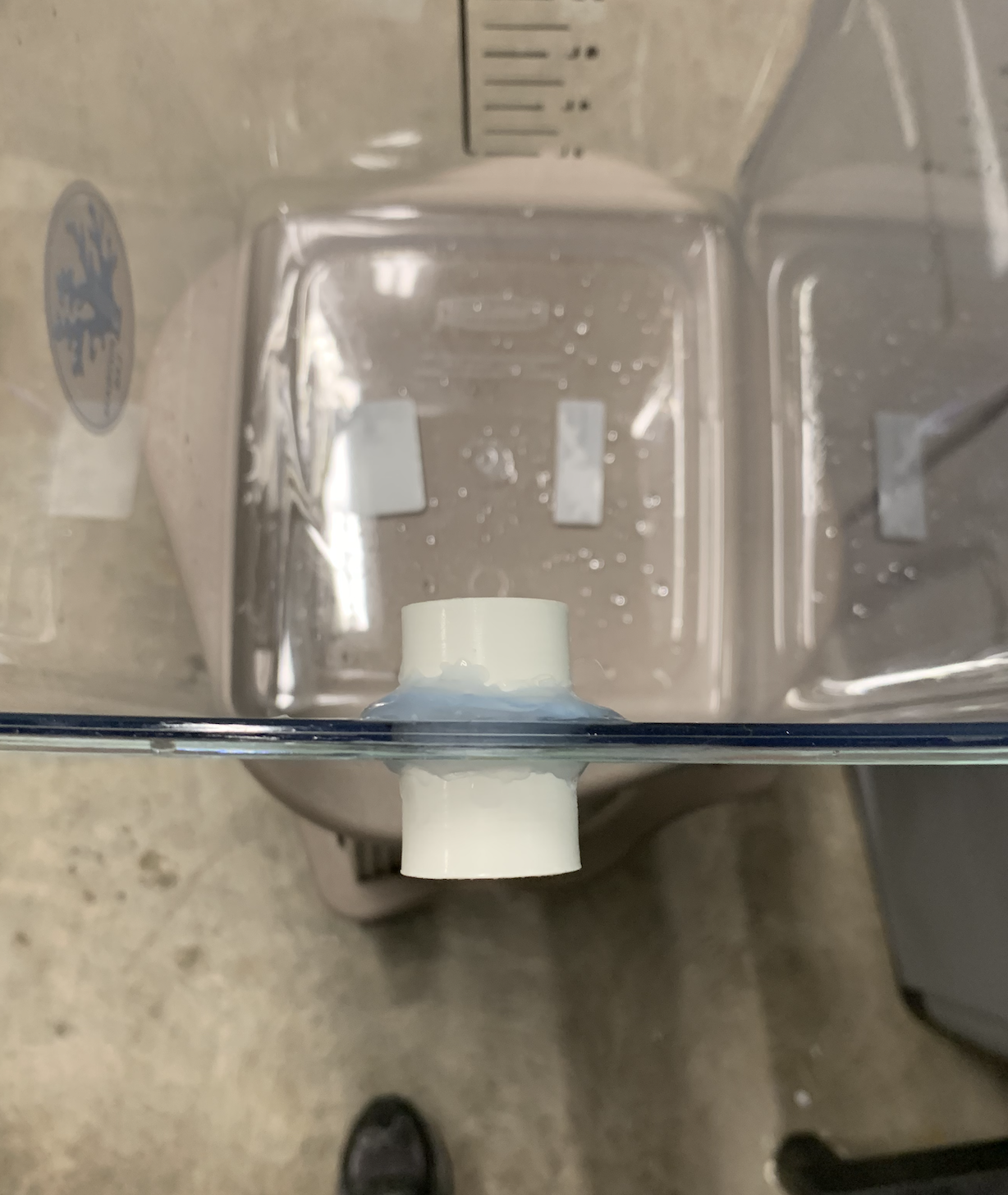
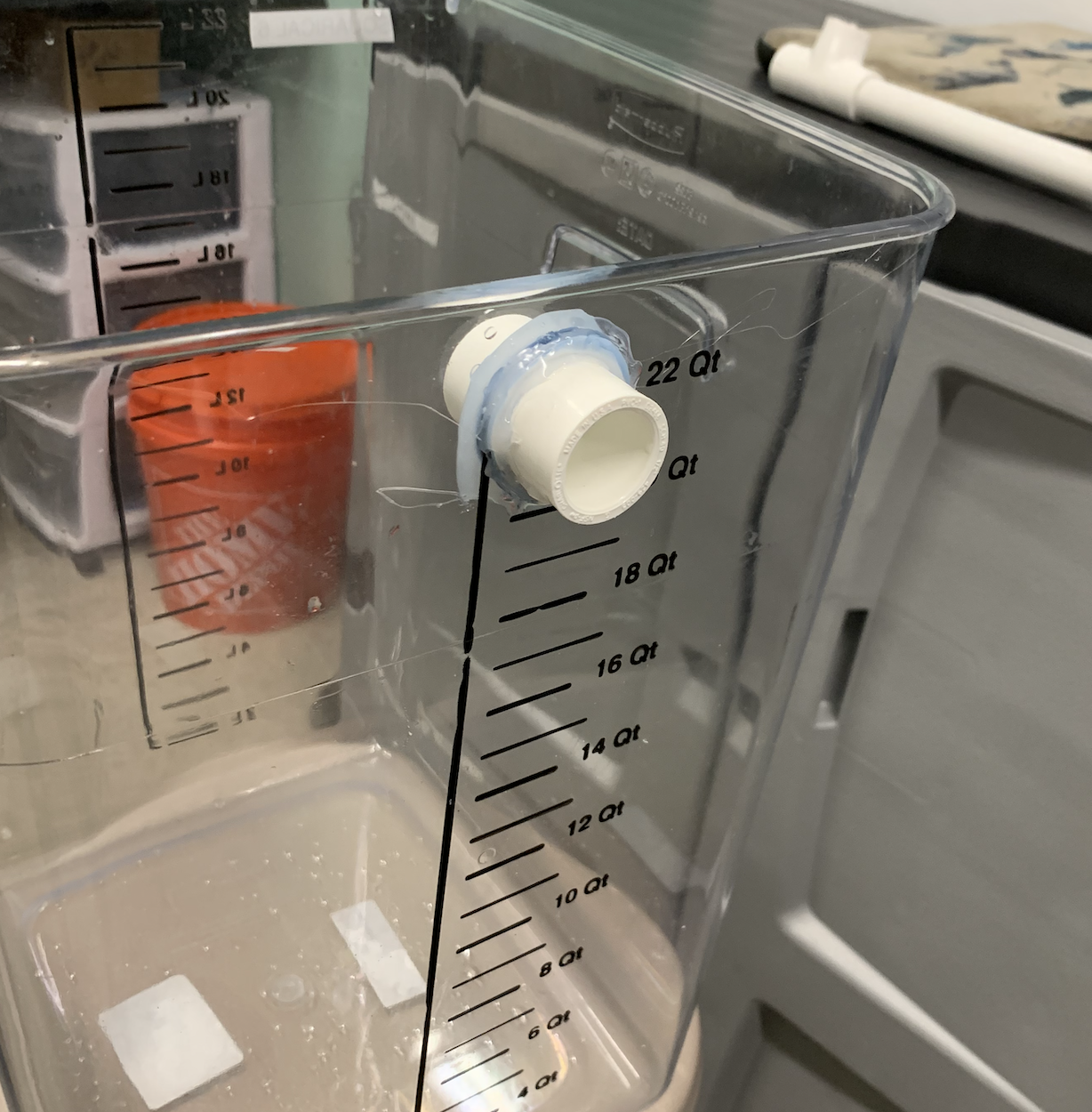
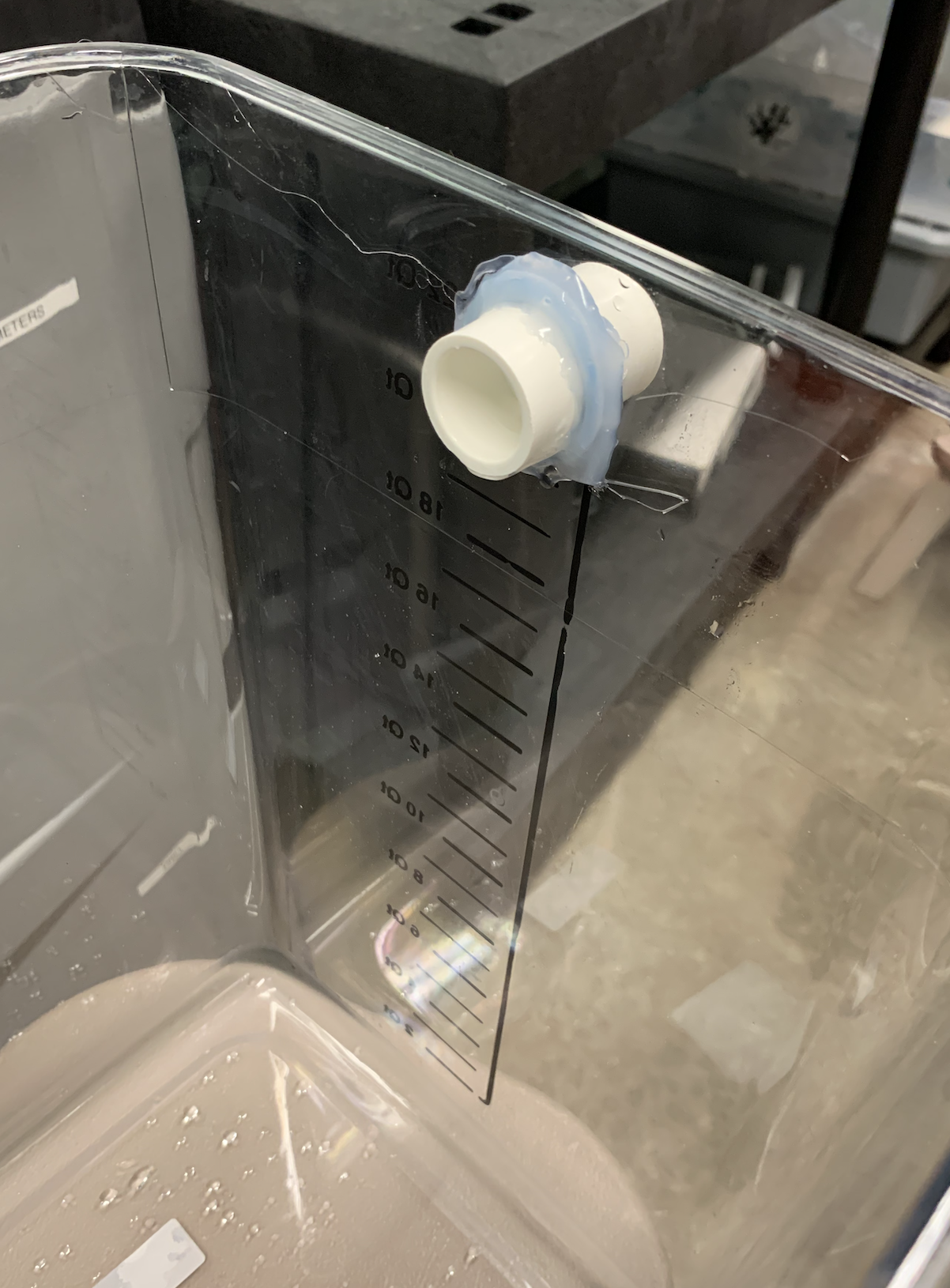
- Cut 1/2” PVC pipe into 2-3 inch pieces. Attach one piece to the coupler end inside of the squarical, and attach the other piece to the coupler end outside of the squarical.
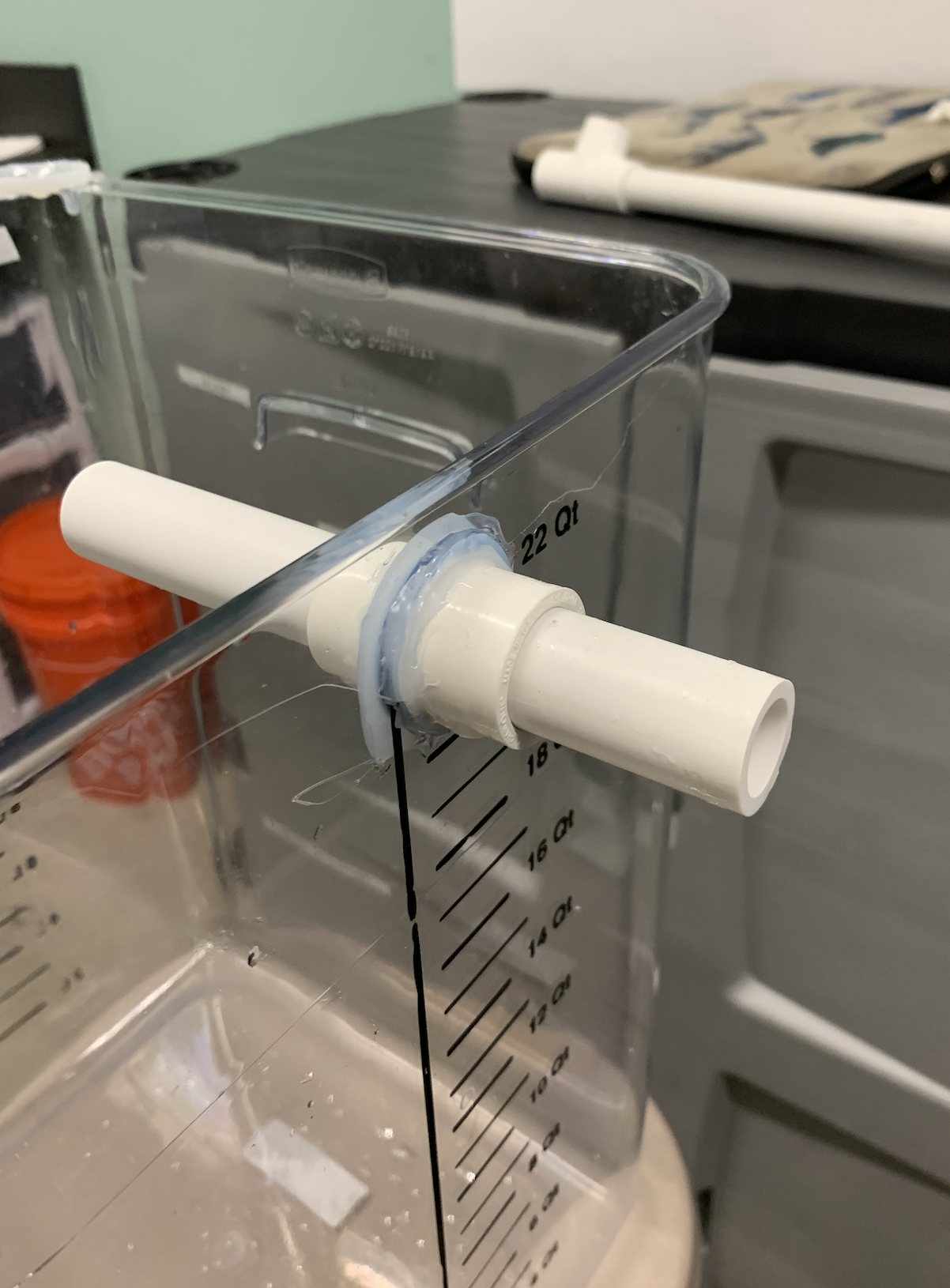
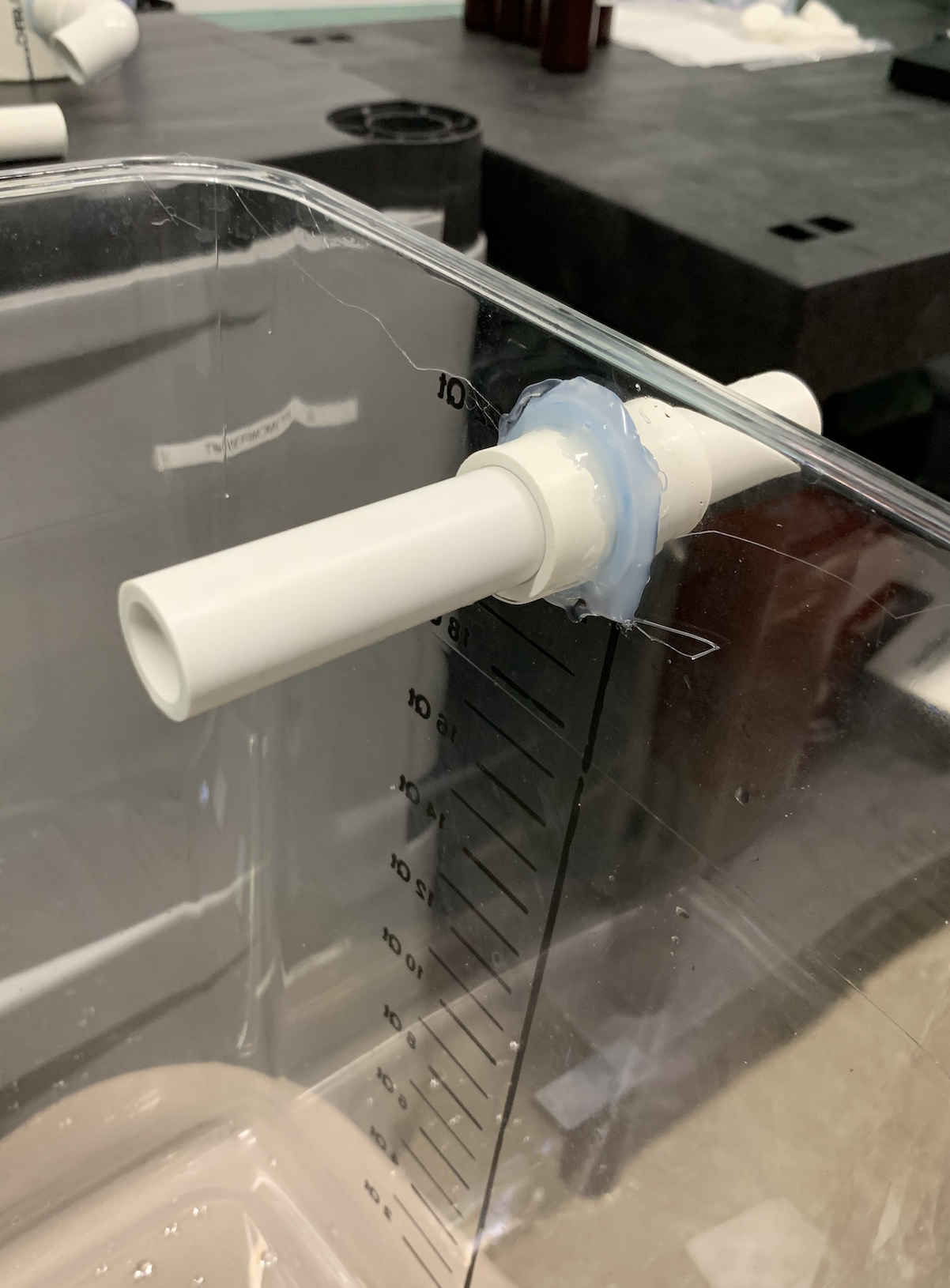
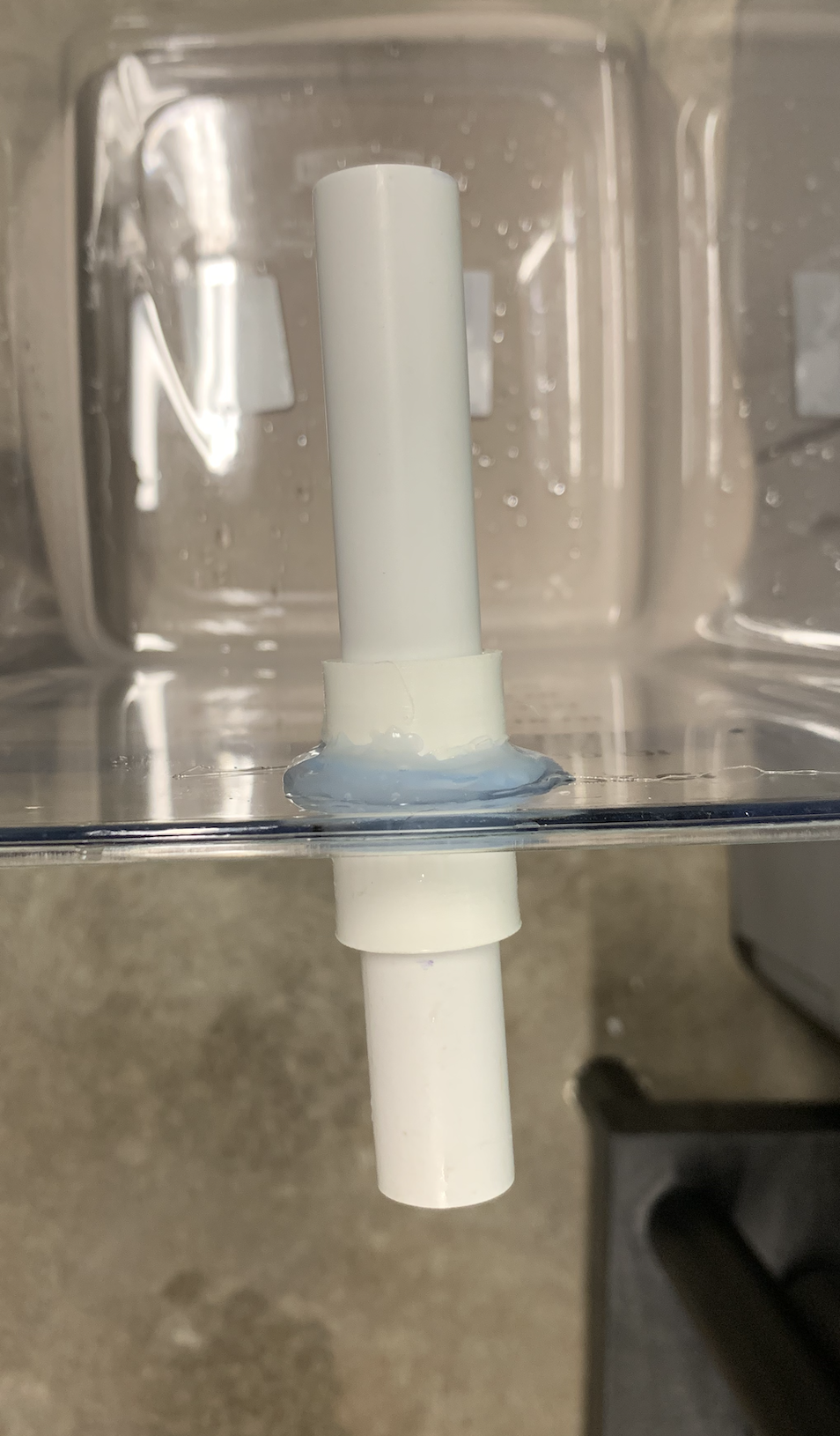
This section describes how to make banjo filters.
-
Cut the 3” PVC into circles of equal size. They should be wide enough to comfortably drill a 1/2” hole.
-
Drill a 1/2” hole into the side of 3” PVC piece
-
Cut a section of blue tubing (enough that will outline the inner hole that’s just been drilled). Cut the tubing in half length-wise. Put the tubing in the hole so it outlines the hole’s diameter (think o-ring). Put a 1/2” PVC coupler through the hole.
-
Using hot glue, glue the coupler in the hole. Only glue the fitting on the outside of the PVC. Fill any remaining openings between the hole’s edge and coupler with hot glue.
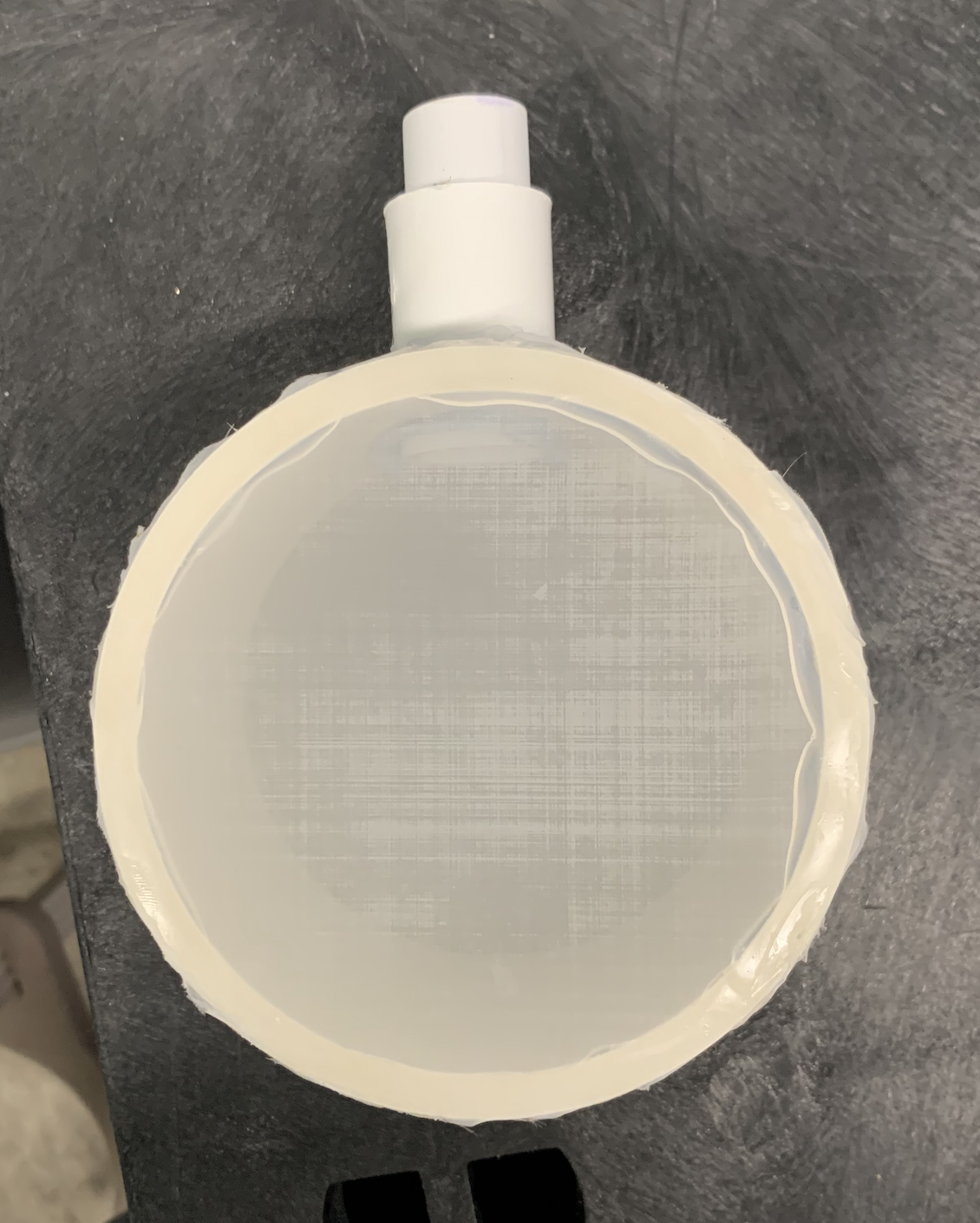
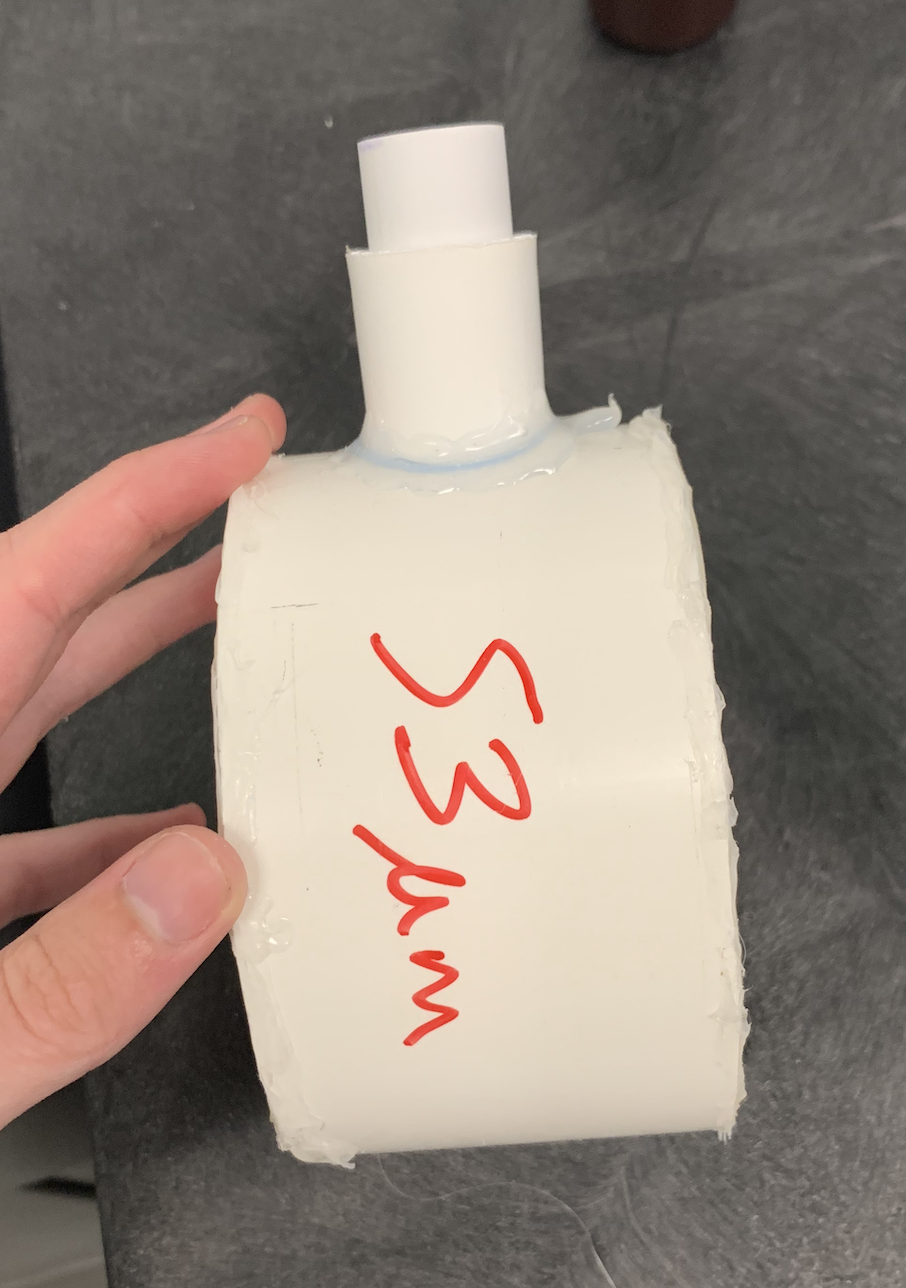
-
Cut 1/2” PVC pipe into 2-3 inch pieces. Attach one of the piece to the coupler in the 3” PVC piece. Once attached, secure a 1/2” PVC elbow to the end of the piece.
- Lay the 3” PVC on mesh and cut out the mesh needed to cover the open PVC part. Using hot glue, glue the mesh to the 3” PVC. Do this for both sides. These are the finished banjo filters!
- The mesh size of the banjos will depend on the size of the larvae being studied. For example, I used 53um mesh for Astrangia and 153um mesh for M. cap and P. acuta.
- Attach the other end of the elbow on the banjo filter to the pipe inside of the squarical.

- If necessary, on the outside of the squarical, put a T PVC connector on the end of the piece sticking out of the squarical. Then cut a 1/2” PVC piece that directs the outflow where necessary. Attach this to the bottom part of the T for drainage.
- I used a T instead of an elbow here to keep water pressure from building up.


- If necessary, glue a ziptie on edge of squarical to hold incoming water tubing. If filtered seawater is needed, clip a container with a mesh bottom to the side of the filter and direct the incoming water tubing there.


add pics from Hawaii